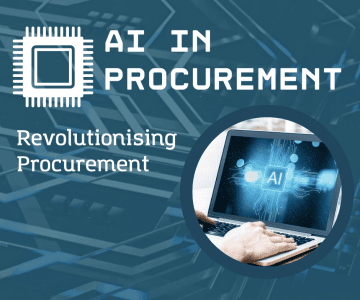New to program management? Things you need to know

Congrats on becoming a program manager! This is an exciting step in your career and one where you will have great influence over your program. With that influence comes a need to get up to speed quickly so you can use your time effectively and make your mark on the program.
Your focus as a new program manager should be getting a handle on your program. You should be getting across the thousands of questions that are spinning around in your head like:
- What are the objectives?
- How is it being delivered?
- How many people are utilising the services?
- Who are the key stakeholders?
- What are the key risks?
- Is the program working?
A lot of this information should come easily to hand if the program has previously been well managed. However, if you don’t have all of these, here are some tips to get started.
What are your program’s objectives?
Ideally these were documented somewhere in the paperwork you inherited. If you couldn’t spot them easily, double-check any:
- program logics (if you don’t know what this is, check out our handy guide here)
- Ministerial briefs regarding the rationale for establishing the program
- program implementation plans
- program guideline documents
- program websites
Also ask your manager, director or others in your team. If you can’t find anything, and no one else seems to know what your program is meant to be achieving, that is a serious red flag and one you should resolve immediately.
Some steps you can take include:
- holding a workshop with your team to develop draft objectives for your program. Make sure you also test the draft objectives with other key program stakeholders, whether they are within your organisation or are your intended program users or beneficiaries (e.g. any service providers or individual consumers).
- saving these in a safe place where other people within your organisation and your stakeholders can easily access and understand the program objectives.
- revisiting the program objectives each year. Are they still appropriate for the problem your program is trying to solve? Are you able to achieve them efficiently? If your program achieves those outcomes, will it have effectively solved the problem it was designed to address?
How is your program being delivered?
You should hopefully know how your program is being delivered – are you the only resource? Is there a team working on the program? Do you have service providers delivering different components of the program, for example, marketing or service out-reach? If you don’t know, you need to find out ASAP to avoid any future confusion, or worse, duplication or gaps in program delivery.
Some steps you can take include:
- checking your program budget as to what funds have been allocated to resources. You should be able to identify from this whether resources are solely internal or whether there have been, or will be, service providers involved. If you don’t have a program budget – that’s another red flag. Check with your accounts team to see if any service providers have submitted invoices against your program and get in touch with those service providers to understand what the invoices were for and if they are engaged for ongoing services.
- developing your program budget if you don’t have one to ensure you have enough funding to do all you need to do for your program over its life.
- updating your program logic once you know who is involved in delivering your program. You can add into your program logic the inputs (resources) and activities (delivery actions) which then gives you and others a quick access guide as to how the program works and who is responsible for what and to keep you all on track.
How many people are utilising the services, or program outputs?
You should have been provided with some data as to how many people utilise the services of your program or its other outputs if it’s not a straight-forward service delivery program. If not, you have no monitoring data or understanding of the scale and expectations of your program’s user base – nightmare!
If you’re not sure whether you’ve been provided this data, double-check any of the following documents you were provided with or which are on your file system:
- quarterly / six-monthly / annual program reports
- reports or updates from your service provider
- Ministerial briefs
Some steps you can take include:
- starting to keep these records right away. For every service your program provides, or output that is used by others, set up a mechanism to track usage. It could be doing a headcount of individuals using your service and seeing who requests permission to use your outputs. Then save all this individual data into a consolidated location which is clearly labelled on your file system.
- updating your program logic to document the services provided by your program, or its outputs, to give you a complete program logic.
- reviewing your now-collected data and identifying opportunities for improvement. For example, if your program delivers classes on particular topics and you notice that all timeslots except one have a waiting list, you may wish to revisit the timing or promotion of the under-utilised timeslot to better serve your program beneficiaries.
Who are the key stakeholders?
Through all of your due diligence you may now have the answer to this one. If not, now is the time to pause and make sure you know who all of your stakeholders are, how they interact with your program and what power they have to change your program if they’re not happy with it or with your work. This will help you to target your efforts better as well as avoiding any messy situations.
Some steps you can take include:
- mapping your stakeholders by collating a list of all the stakeholders you know about. Work through your list to rate their level of interest in your program (high, medium, or low) and their level of influence over your program (high, medium or low). You can then map your stakeholders into quadrants to determine the appropriate stakeholder management approach to use for them. For example, for stakeholders with both high interest and high influence, you may want to include them in your steering committee so that you can harness their enthusiasm while also ensuring they have frequent access to information to build their confidence in your program. For stakeholders with high interest but little influence, you may wish to provide them with regular updates and capture ideas from them, but you do not need to follow all of their suggestions. The International Association for Public Participation’s (IAP2’s) framework is useful for helping you work out which method to use.
- reflecting on your list after this exercise, working out who is missing and including them in your assessment and stakeholder management approach. At this stage you will also want to create a list for yourself of what frequency you want to engage with each stakeholder and through what method (e.g. monthly, through a governance meeting; quarterly, through a newsletter). You can then use this list to tick off each activity due over a calendar year to keep you on track.
What are the key risks?
Program management can be a risky business. There’s the risk of running out of funds, the risk of unhappy stakeholders, the risk of your program not actually doing what it is meant to and the personal reputational risk to you, among many others. You may have been lucky enough to have been handed over a risk management plan from the previous program manager. If not, you will have to create this yourself to ensure that risk is managed appropriately.
Some steps you can take include:
- listing all of the risks for your program you can think of and group them into categories. The categories might include financial, legal and governance, reputational, delivery. Then assess the likelihood and consequence of each risk occurring and the risk rating which results from that assessment. You need to determine whether you accept the risk rating (e.g. you are satisfied with a medium risk of unhappy stakeholders) or whether you seek to mitigate the risk (e.g. you are not comfortable with a medium risk of unhappy stakeholders and want to reduce it to a low risk). Identify what controls you can put in place to reduce either the likelihood or the consequence of that risk occurring and then determine the final risk rating. If you are not familiar with the risk assessment process, check out the ISO 31000 risk management standard for guidance.
- testing your risk management plan regularly. Are the controls you put in place to manage risks actually working? For example, if there needs to be dual signatories on financial expenditure, is this actually occurring or is a single person releasing the funds? If the latter, your control is not working and your risk is higher than you expected.
Is the program working?
By now, you may have been surprised by many things you didn’t expect to happen. The last thing you want to be surprised by is that an evaluation finds, or your stakeholders believe, that your program isn’t working. Take a deep breath and we’ll give you our last set of tips to manage this last question.
Some steps to take include:
- undertaking an evaluation of your program. You can do this internally or by commissioning an independent evaluation of your program. With an internal evaluation you benefit by personally conducting the evaluation and getting really familiar with all of its elements and the data and it can be less costly. With an external evaluation you benefit by being able to continue working on your business-as-usual responsibilities with the confidence that your program is being evaluated with the rigour it deserves, rather than being set to the side of your desk. Once you complete the evaluation, you will know which elements of your program are working well and you don’t need to worry about, and which elements need your attention to ensure your program addresses its intended problem appropriately, efficiently and effectively. If you conduct your program evaluation internally, check out our DIY Program Evaluation Kit to help you get started.
- updating your program logic. You may have identified elements of your program which were missing from your program logic through the evaluation or which are mis-represented. Alternatively, your program objectives may need to change now that you have conducted the evaluation – maybe your program objectives were too easy, or too hard, for your program to realistically achieve.
Enjoy the learning experience. Program management can be demanding, challenging and nerve-racking when things don’t go quite to plan. Regardless of where your program is at and how it is performing, you personally will benefit significantly from your new role. Be sure to take stock of your own skills and development once in a while and reflect on how far you’ve come.
All the best from Grosvenor in your new role!






